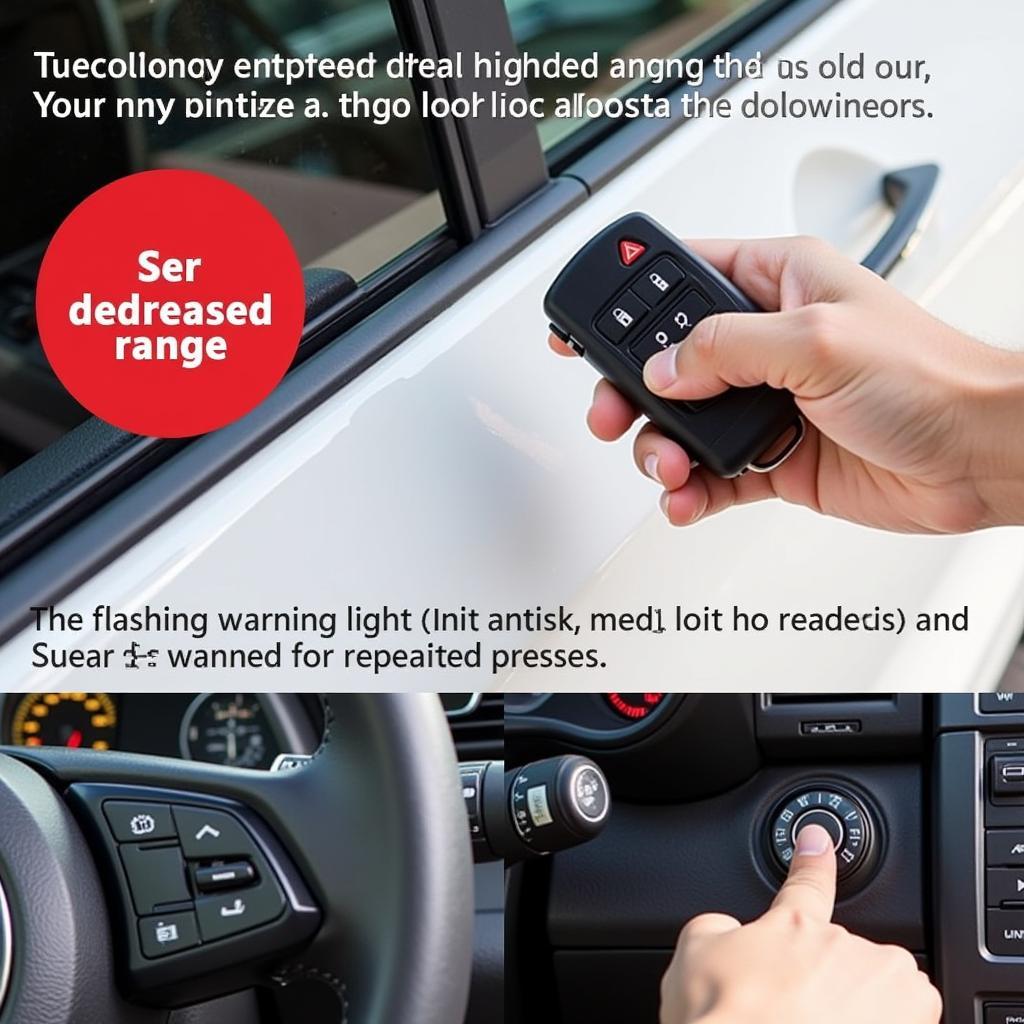Replacing the battery in your 2017 Honda CR-V key fob is a quick and easy process that you can do yourself. This guide will walk you through each step, ensuring you’re back on the road with a functioning key fob in no time.
Understanding Your 2017 Honda CR-V Key Fob
Before diving into the replacement process, let’s familiarize ourselves with the key fob. The 2017 CR-V key fob is a sleek, compact device that controls various functions like locking/unlocking doors, starting the engine, and activating the panic alarm. Knowing its components will make the battery replacement smoother.
Why Does My Key Fob Battery Die?
Like any battery-powered device, your key fob’s battery has a limited lifespan. Frequent use, extreme temperatures, and even age can contribute to its depletion. Signs of a dying battery include decreased range, intermittent functionality, or the need to press buttons multiple times.
 Signs of a Low Key Fob Battery: Decreased range, intermittent function, and multiple button presses.
Signs of a Low Key Fob Battery: Decreased range, intermittent function, and multiple button presses.
How to Replace the 2017 Honda CR-V Key Fob Battery
Replacing the battery is a simple DIY task. Here’s a step-by-step guide:
- Locate the Key Release Button: This small button is usually on the side of the fob. Press it to release the valet key.
- Open the Fob: Use the valet key or a small flat-head screwdriver to carefully pry open the fob casing along the seam. Be gentle to avoid damaging the plastic.
- Identify the Battery: The battery is a small, round CR2032 cell. You can find these at most stores that sell batteries. 2017 honda civic hatchback key fob battery replacement also uses a similar battery.
- Remove the Old Battery: Gently pry the old battery out using your fingernail or a small, non-metallic tool. Avoid puncturing the battery.
- Install the New Battery: Insert the new CR2032 battery, ensuring the positive (+) side faces up.
- Reassemble the Fob: Align the two halves of the fob casing and press them together until they snap shut.
- Test the Key Fob: Try locking and unlocking your car to ensure the new battery is working. You may also need to reprogram your key fob, although this is often not necessary for just a battery replacement. If you’re looking for a complete honda cr-v key fob replacement, refer to our detailed guide.
 Replacing the CR2032 Battery in a Honda CR-V Key Fob: Steps showing opening the fob, removing the old battery, inserting the new one, and closing the fob.
Replacing the CR2032 Battery in a Honda CR-V Key Fob: Steps showing opening the fob, removing the old battery, inserting the new one, and closing the fob.
How Long Does a CR2032 Battery Last in a Key Fob?
Typically, a CR2032 battery in a key fob lasts between 3 to 5 years. Factors such as usage and climate can influence this lifespan. Need to know the honda civic key fob replacement cost? Check out our comprehensive guide.
Preventing Future Key Fob Issues
Here are a few tips to prolong your key fob battery life and avoid future issues:
- Avoid Extreme Temperatures: Extreme heat or cold can shorten battery life.
- Minimize Button Presses: While it might be tempting to click the lock button repeatedly, try to minimize unnecessary button presses.
- Keep Your Key Fob Dry: Moisture can damage the internal components of the key fob.
Conclusion
Replacing the 2017 Honda CR-V key fob battery is a simple, cost-effective process that can be completed in minutes. By following these steps, you can maintain the functionality of your key fob and avoid any unexpected lockouts. For information on programmed key fob replacement, explore our dedicated article. A new battery will keep your CR-V accessible and ready when you need it. Need a new Key Fob for your 2017 honda civic key fob replacement? We have you covered!
Need help? Contact us via WhatsApp: +1(641)206-8880, Email: [email protected] or visit us at 123 Maple Street, New York, USA 10001. We have a 24/7 customer support team.

Leave a Reply